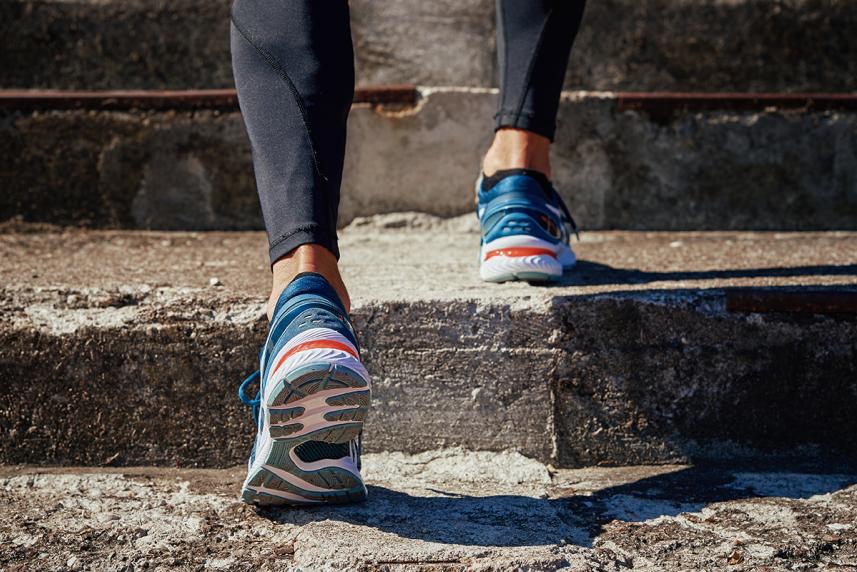
How to solve your heel pain

A tight, stabbing pain in your heel might be caused by a condition called plantar fasciitis. Here’s what it is and how to treat it.
You step out of bed ready to start the day. But as soon as your heel hits the ground, you feel a stabbing pain. Sound familiar? You might be dealing with a condition called plantar fasciitis — a common cause of heel pain.
Nearly 2 million people in the U.S. experience this condition each year, according to the American Academy of Orthopedic Surgeons (AAOS). And it can be incredibly uncomfortable. The good news is that you can usually find relief with simple at-home treatments.
Read on to learn why this pesky condition crops up in the first place and what you can do to ease the pain.
What exactly is plantar fasciitis?
Plantar fasciitis gets its odd name from the thick band of tissue that runs along the bottom of the foot. That’s known as the plantar fascia. The tissue creates your foot’s arch and connects your heel bone to your toes. It also helps absorb foot pain when you walk, jump or run.
But if the tissue is overstretched or overused, it can become inflamed. The inflammation is called plantar fasciitis, explains Nicole Jaffke. She’s a physical therapist and the founder and owner of Affinity Therapy in San Diego, California.
(Find out about another painful foot and ankle injury here.)
Symptoms of plantar fasciitis
This condition isn’t shy about announcing its arrival. Jaffke says common symptoms include:
- Sharp, stabbing heel pain
- Sharp pain in the morning when you get out of bed or any time you take steps after sitting for a long time
- Pain with prolonged standing
- Tight feeling through the arch of the foot
- Increased pain after exercise
The Optum Store provides total care for your body and mind. Refill prescriptions, schedule a virtual visit or shop for health essentials, all from the comfort of home. Start exploring.
Risk factors for heel pain
This condition is extremely common in runners and other athletes who play high-impact sports. It’s even earned the nickname “runner’s heel.” There is an increased risk for athletes because they are more likely to overuse the tissue.
But plantar fasciitis can affect anyone. “Repetitive tension and stress on the fascia can cause small tears or irritate and inflame it,” Jaffke says. The condition is also seen more commonly in patients ages 40 to 60, per the AAOS.
Other common causes and risk factors that can cause plantar fasciitis include:
- Tight calf muscles
- Standing for long periods of time on a hard surface
- Improper footwear such as old or worn-out shoes
- Poor running or walking style
- Too much activity too quickly
- Changes in terrain when you run or walk
- High arch or flat foot
- Obesity
Treatments for plantar fasciitis
“I always recommend seeking professional health care sooner rather than later, as it is much easier to fix early on,” says Jaffke.
An orthopedist will tell you if the pain is in fact plantar fasciitis (and not a heel stress fracture, for example). If you do have plantar fasciitis, your doctor will likely prescribe some at-home treatments. And you may be referred to a physical therapist to help with your healing process.
The good news: More than 90% of people with plantar fasciitis will see their symptoms improve within 10 months of simple treatments and behavioral changes. That’s according to the AAOS.
Common treatments for plantar fasciitis include:
- Stopping the activity that causes the pain
- Icing the foot with a cool pack
- Gently massaging the bottom of the foot with a tennis ball or golf ball
- Stretching, massaging or using a foam roller on calf muscles
- Taking an anti-inflammatory pain reliever such as ibuprofen
After your pain is under control, Jaffke recommends doing some light foot exercises. Practicing daily can help you gently stretch your arches. Give these a try:
- Towel scrunches. Place a washcloth under your foot. Use your toes to scrunch the fabric.
- Toe yoga. Place your foot flat on the ground. Lift your big toe off the floor without lifting your other toes. Then try to keep your big toe on the ground while lifting your other toes.
- Big-toe stretch. Stand near a wall with your toes flexing upward against it. This exercise uses the wall to stretch the foot.
- Calf stretch. Slowly raise your heel off the ground to stand on your tiptoes. Then slowly come back down. You can do this on both legs at the same time or alternate them.
- Single-leg stability. Stand on 1 leg. Once you are balanced, close your eyes. See how long you can hold the pose. Or stand on an unstable surface, such as a couch cushion or pillow, to make it more difficult.
When to call your doctor
If your pain is still hanging around after 6 to 12 months of at-home treatment, make an appointment with your doctor. There are additional in-office options that may help, including:
- Wearing a cast
- Cortisone steroid injections
- Platelet-rich plasma injections
- Extracorporeal shockwave therapy
- Ultrasonic imagining
- Surgery

Additional source
Heel pain statistic and age as a risk factor: American Academy of Orthopedic Surgeons (2022). “Plantar fasciitis and bone spurs”